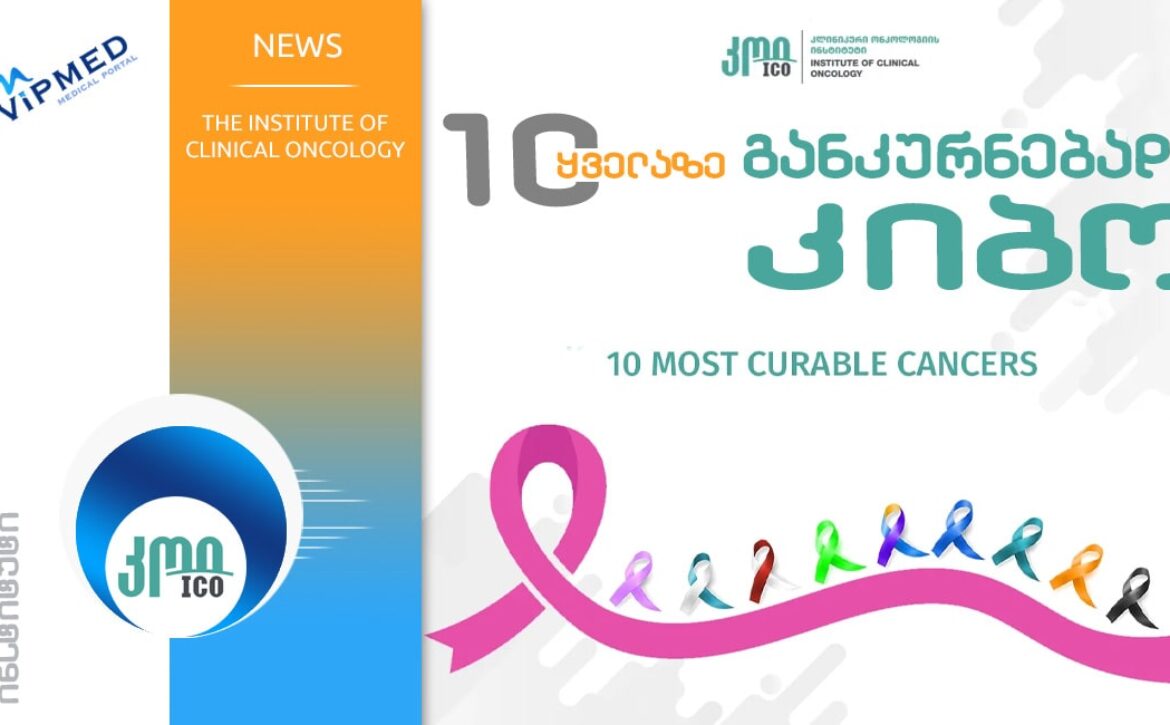Most Curable Cancers
Advances in cancer detection and treatment mean more people are surviving cancer, especially when it’s caught early. Some of the most curable cancers include thyroid, prostate, and testicular cancer.
The number of cancer survivors in the United States is growing. This may be related to an aging population, but it also reflects advances in early detection and treatment. In general, cancer is easiest to treat when diagnosed early.
This article reviews cancers with the highest 5-year relative survival rates when diagnosed in the early stages.
What do we mean by curable?
The American Cancer Society (ACS) explains that “cured” means there’s no evidence of cancer, you don’t need more treatment, and cancer isn’t expected to return. But a doctor can never be 100% certain that cancer won’t return.
According to the National Cancer Institute (NCI), some doctors may say you’re cured if you’re in complete remission for 5 years or more. For most cancers, recurrences are most likely in the first 5 years. But cancer can return many years later.
A doctor may use the word “cured,” but it is more likely they’ll say you’re in remission or there’s no evidence of disease.
Some cancers are easier to treat than others, so survival rates vary significantly. Another key factor is the stage at diagnosis. “Stage” describes the tumor size and how far it may have spread. Other factors that affect your outlook are:
- the tumor grade, which describes how abnormal cancer cells are and how quickly they’re likely to spread
lymph node - involvement (whether the cancer has spread to regional lymph nodes)
- your age and overall health
- your response to treatment.
1. Thyroid cancer
Early detection is common in thyroid cancer. At diagnosis, about 65% of cases are localized cancers and 29% are regional cancers. “Localized” means that the cancer is limited to a small area, while “regional” means that the cancer has spread to nearby areas. “Distant” means that the cancer has spread to organs or lymph nodes that are far from the original tumor.
Relative survival rates in the table below are based on the NCI’s Surveillance, Epidemiology, and End Results (SEER) Program population statistics for the United States from 2012 to 2018.
| Stage at diagnosis | 5-year relative survival rate |
|---|---|
| Localized | 99% |
| Regional | 98% |
| Distant | 53% |
| All stages combined | 98% |
Survival rates vary, depending on the specific type of thyroid cancer. Well-differentiated tumors, including papillary thyroid cancer and follicular thyroid cancer, are the most common. “Well-differentiated” means that the cancer cells look more like normal cells. When caught early, well-differentiated cancers can usually be cured, according to the NCI.
Poorly differentiated and undifferentiated tumors are made up of cancer cells that look unlike or very unlike normal cells. Poorly differentiated or undifferentiated thyroid cancers are known as anaplastic thyroid cancers, which aren’t common but are much more aggressive.
With a tumor between 1 and 4 centimeters, the main treatment is usually surgery to remove all or part of the thyroid. Other treatments depend on the cancer type and stage.
2. Prostate cancer
Most prostate cancers are slow growing. About 70% are diagnosed as localized cancers, and 13% are diagnosed as regional cancers. Prostate-specific antigen (PSA) testing may have a lot to do with early detection.
The relative survival rates shown in the table below are based on SEER population statistics for the United States between 2012 and 2018.
| Stage at diagnosis | 5-year relative survival rate |
|---|---|
| Localized | >99% |
| Regional | >99% |
| Distant | 32% |
| All stages combined | 97% |
Prostate cancer can run in families and certain gene variants may increase your risk.
Low grade prostate cancer may not require treatment. Careful monitoring, or active surveillance, may be appropriate. Treatment for early stage disease may include surgery, radiation therapy, or radioactive seed implants (brachytherapy).
3. Testicular cancer
Testicular cancer is the most common cancer in people assigned male at birth, ages 15 to 45 years. When caught early, it’s one of the most curable.
Relative survival rates in the table below are based on SEER population statistics for the United States from 2012 to 2017.
| Stage at diagnosis | 5-year relative survival rate |
|---|---|
| Localized | 99% |
| Regional | 96% |
| Distant | 73% |
| All stages combined | 95% |
Treatment for early stage testicular cancer may include active surveillance. It may also involve surgical removal of one or both testicles (orchiectomy) or radiation therapy.
4. Skin cancer
With early treatment, almost all cases of basal cell and squamous cell skin cancers are curable. Melanoma is also highly curable in the earliest stages. But it’s more likely to spread. About 78% melanoma diagnoses are localized cancers.
Relative survival rates in the table below are based on SEER population statistics for the United States from 2012 to 2018.
| Melanoma stage at diagnosis | 5-year relative survival rate |
|---|---|
| Localized | >99% |
| Regional | 71% |
| Distant | 32% |
| All stages combined | 94% |
Skin cancer is the most common cancer around the world. The main cause is exposure to ultraviolet (UV) rays.
Treatment for early stage skin cancer involves removing the lesions.
5. Breast cancer
The death rate from breast cancer decreased by 43% from 1989 to 2020. This may be due to earlier detection and improved treatment. About two-thirds of cases are at the localized stage at diagnosis.
Relative survival rates in the table below are based on SEER population statistics for the United States from 2012 to 2018.
| Stage at diagnosis | 5-year relative survival rate |
|---|---|
| Localized | 99% |
| Regional | 86% |
| Distant | 30% |
| All stages combined | 91% |
Survival rates vary according to the specific type. For example, triple-negative and inflammatory breast cancers are more aggressive than other types.
The exact cause of breast cancer isn’t clear. Along with environmental factors, certain inherited gene mutations may increase risk.
Treatment for early stage breast cancer generally involves surgery. Other treatments depend on the type and stage.
6. Uterine cancer
When caught early, the outlook for people with uterine cancer is very good. However, only 67% of cases are diagnosed at the localized stage.
Relative survival rates in the table below are based on SEER population statistics for the United States from 2012 to 2018.
| Stage at diagnosis | 5-year relative survival rate |
|---|---|
| Localized | 95% |
| Regional | 70% |
| Distant | 18% |
| All stages combined | 81% |
Surgery is the main treatment for early stage uterine cancer. Other options depend on how far the cancer has spread.
7. Hodgkin’s lymphoma
Hodgkin’s lymphoma is a type of blood cancer. The outlook for people with early stage disease is good. Only 14% of cases are diagnosed as stage 1 cancers, while 38% are diagnosed as stage 2 cancers.
Relative survival rates in the table below are based on SEER population statistics for the United States from 2012 to 2018.
| Stage at diagnosis | 5-year relative survival rate |
|---|---|
| Localized | 93% |
| Regional | 95% |
| Distant | 83% |
| All stages combined | 89% |
Treatment for early stage disease may include chemotherapy and radiation therapy.
8. Kidney and renal pelvis cancer
When the cancer is caught early, people with kidney or renal pelvis cancer have a favorable outlook. About 66% of diagnoses occur at stage 1. Current treatment methods cure more than 50% of people with stage 1 renal cell cancer.
Relative survival rates in the table below are based on SEER population statistics for the United States from 2012 to 2018.
| Stage at diagnosis | 5-year relative survival rate |
|---|---|
| Localized | 93% |
| Regional | 72.3% |
| Distant | 15.3% |
| All stages combined | 77% |
The main treatment for early stage kidney cancers is surgery to remove part or all of the kidney. Radiation therapy may also be necessary. Other treatments depend on the type and stage.
9. Ovarian cancer
Localized ovarian cancer is quite treatable. But there’s no specific screening test and early symptoms may not be obvious. Almost 60% of cases are late stage cancers at the time of diagnosis.
Relative survival rates in the table below are based on SEER population statistics for the United States from 2012 to 2017.
| Stage at diagnosis | 5-year relative survival rate |
|---|---|
| Localized | 93% |
| Regional | 74% |
| Distant | 31% |
| All stages combined | 49% |
Early treatment includes surgery to remove one or both ovaries.
10. Cervical cancer
With the help of a Pap test, it’s possible to identify and remove precancerous lesions to prevent cervical cancer. Screening can also detect early stage cervical cancer. But only 44% of cases are at the localized stage at diagnosis.
Relative survival rates in the table below are based on SEER population statistics for the United States from 2012 to 2018.
| Stage at diagnosis | 5-year relative survival rate |
|---|---|
| Localized | 91.8% |
| Regional | 59.4% |
| Distant | 17.1% |
| All stages combined | 67% |
Most cervical cancers are caused by persistent infection with the human papillomavirus (HPV).
Surgery is the main treatment for early stage disease.
Takeaway
Advances in cancer detection and treatment mean more people are surviving cancer. There’s a positive outlook for people with many different types of cancer, especially when the cancer is caught early.
Some of the most curable cancers, such as cervical and prostate cancers, have screening tests to help with early diagnosis. Other very treatable cancers, such as ovarian and uterine cancers, don’t have routine screening tests and may escape detection until they spread.
That’s why it’s important to be aware of risk factors, symptoms, and cancer screening tests. If you have concerns about your cancer risk, consider speaking with a doctor to learn more.
Source: https://www.healthline.com/health/cancer/curable-cancers







